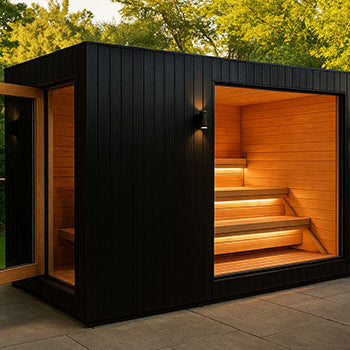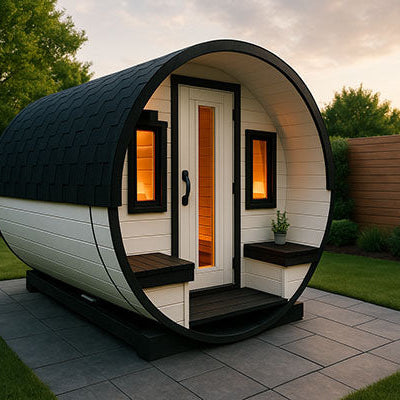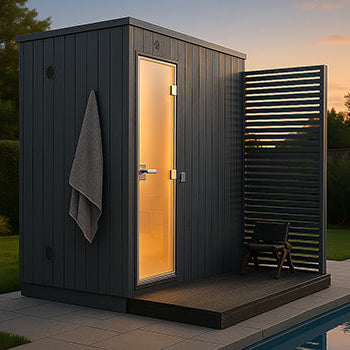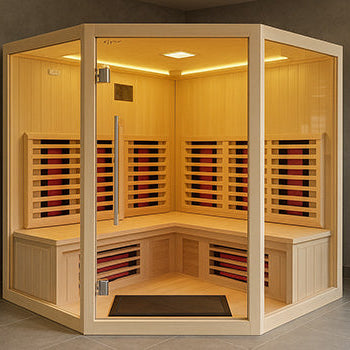Wheezing at the thought of saunas? Short answer: they might help—but only if you play it smart. From snuggling into an indoor sauna session to escaping into a peaceful outdoor sauna cabin, heat therapy has stirred curiosity among those managing asthma. Wondering if it’s all hot air or genuinely helpful? Let’s break it down together.

Saunas and Asthma: Assessing the Potential Benefits and Risks
Understanding Asthma and Common Triggers
Asthma isn’t just about coughing fits or carrying an inhaler everywhere. It’s a daily balancing act between triggers and treatments. From dusty old attics to chilly winter mornings, the world is full of things that can set off wheezing and tightness. Heat and humidity? They’re on that list too—sometimes friend, sometimes foe. That’s why the sauna debate can feel as murky as a steam room.
How Saunas Might Help Some People with Asthma
Easing Congestion and Loosening Mucus (Especially Steam Rooms)
Ever noticed how breathing feels easier after a hot shower? Steam rooms work similarly, cranking up the humidity to loosen mucus and clear clogged airways. For some asthma sufferers, this moist heat can bring sweet relief, giving that satisfying “ahh” moment when the chest finally opens up.
Relaxing Airway Muscles Through Heat
Heat has a way of melting tension, from sore shoulders to tight airways. Saunas create that warm, cocoon-like environment where bronchial muscles can relax a little. Think of it as giving your lungs a gentle, heated stretch.
Stress Reduction Benefits
Life’s stressors—deadlines, traffic jams, and awkward family dinners—don’t just get under your skin; they get into your lungs, too. Stress is a sneaky asthma trigger. Saunas, with their calming glow and quiet spaces, can help peel back those layers of stress, calming both the mind and the breath.
Research on Lung Function and Respiratory Health
Early studies suggest sauna sessions might give a small but encouraging boost to lung function. It’s not a miracle cure, but for some, it’s like a friendly nudge toward easier breathing. Still, science says it’s not one-size-fits-all—what soothes one person’s airways might irritate another’s.
Potential Downsides and Triggers for Asthmatics

Airway Irritation from Dry Heat
Dry saunas might feel like walking into the Sahara Desert. For sensitive lungs, this can dry out airways, making them more prone to irritation or coughing fits. Some people walk out breathing easier—others, not so much.
Intense Heat as a Potential Asthma Trigger
Jumping into extreme heat can shock the system. For asthmatics, that sudden blast of warmth might cause airways to constrict instead of relax. That’s why gentle, gradual exposure is key.
Risks of Overheating and Dehydration
Staying too long in a sauna is like overcooking pasta—it turns from perfect to problematic fast. Overheating and dehydration can sneak up on you, making breathing feel heavier and your body sluggish. Keep water close and exits closer.
Important Considerations for Using Saunas with Asthma
Steam Room vs. Dry Sauna: Is One Better?
If you’re dipping your toes into sauna therapy, steam rooms might feel like the safer bet. Their humid environment tends to be gentler on lungs compared to the sharp, dry heat of a traditional sauna. But personal trial and error—done carefully—is the only way to know.
Starting Slowly and Monitoring Your Breathing
No need to go full Viking on day one. Start slow, keep sessions short and temperatures mild. Pay attention to how your body and breath respond. If you feel tightness creeping in, it’s your cue to exit.
Avoiding Sauna Use During Flare-Ups or Illness
Saunas are off the menu during asthma attacks or when you’re under the weather. Forcing your body into extreme environments when it’s already struggling can make symptoms spiral.
Why Consulting Your Doctor is Essential
Before you grab a towel and sprint for the sauna, have a heart-to-heart with your doctor. They know your asthma best. Personalised advice can save you from guesswork—and keep your lungs safe.
Conclusion: Making an Informed Decision About Saunas and Asthma

So, are saunas good for asthma? Possibly—but it’s not a golden ticket. Some people swear by the soothing warmth, while others find it stirs up more trouble. Whether you lean toward a tranquil outdoor sauna escape or a cosy indoor sauna retreat, it’s about knowing your body, your triggers, and your limits. Start slow, stay mindful, sip that water, and always—always—get your doctor’s go-ahead. With a little care, a sauna might just become your breath of fresh air.









